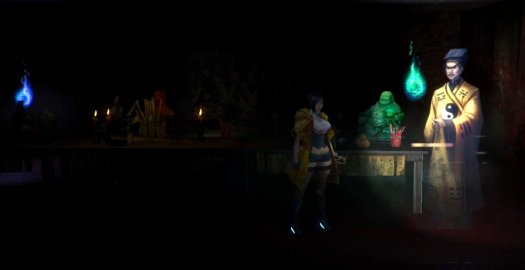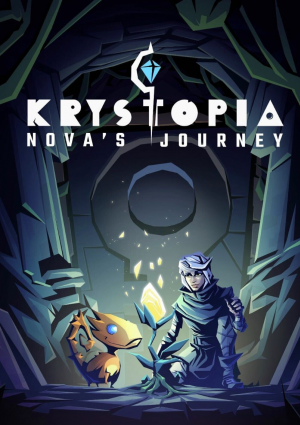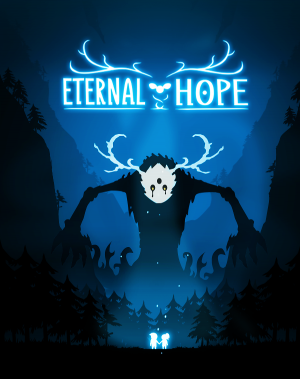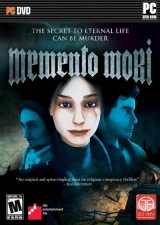Review for Sense – A Cyberpunk Ghost Story

We’ve all been there. Working up the nerve to go on a blind date, then showing up only to get stranded in an apartment building haunted by the spirits of residents who died horrific deaths spread over the last one hundred years. No? Okay, it took indie developer Suzaku to work this notion into the 2D side-scrolling Sense – A Cyberpunk Ghost Story. Despite the occasional jump scare, Quick Time Event, and brief bout of combat, Sense is first and foremost a supernatural adventure, but one that draws from Asian tales of spooks and specters rather than the more frequently visited European sources. While the game gets off to a slow start, with even slower gameplay, its story builds into a decidedly intriguing experience by journey’s end, though it takes far longer than it should to get there.
The tale opens in August of 2084 in the city of Neo Hong Kong with a young woman named Mei riding the subway on her way to a nightclub for a date. Neo Hong Kong lives up to its cyberpunk billing with the decaying buildings of the past augmented by neon lights, flying hover drones, and pedestrians equipped with various biological and technological augmentations. Mei herself sports a pair of bionic eyes, which are glitching on her when she arrives so she retreats to the bathroom to tend to them. When she leaves the bathroom, however, she discovers things have dramatically transformed. The crowded club floor is gone, and instead she finds herself in the drab corridors of an aged and condemned apartment building. So startling is the transformation that Mei wonders if she left the bathroom by a different door. The complex she now finds herself in is comprised of seven floors, which Mei must navigate in order to escape. And it’s more than just an exit she needs.
Through a series of journals and letters, you’ll learn the sad and terrible fates of the building residents stretching back a hundred years. Oh, and you’ll also get the chance to meet them. The spirits of these pour souls, who all suffered grisly deaths, are unable to cross over into the afterlife. They’re trapped in the building, for reasons that become apparent as the story progresses, and they’re none too pleased to have a still-living visitor roaming their corridors.
The assorted ghosts, pulled from the Taoist background the game is based on, are almost all out to kill Mei. Most of these are known as gaki, lesser phantoms that result from a twisted soul. More worrisome is the dai sai gwai, a far more dreadful demon whose human soul is not just twisted but has become utterly corrupted by its own darkness and the cumulative depravities of its ancestors. These more powerful spirits are bolstered by the gaki, and Mei will ultimately have to deal with just such a monster. Despite the hatred these spooks hold for Mei, she still feels pity for them and participates in various spiritual rites to allow them to cross over to the afterlife – with the secondary benefit of removing them as a lethal threat from her surroundings. The Asian flavour certainly lends a refreshing factor to what is essentially a typical ghostbusting story, so it’s a shame that the game is a bit of a slog for so long.
From the very first floor of the apartment complex, the detailed and eye-catching look of Neo Hong Kong evaporates. What’s presented instead is a drab affair, with faded wallpaper and an air of desolation. Everything is shrouded in grey shadows, pierced only by the flashlight on Mei’s PDA. This eerie half-darkness is pervasive through most of the game. Perhaps it was intended to heighten the tension and scare factor, but in practice I found it just made most of the locations look dull and lifeless. When you traverse the different floors, you’ll find most of them have the same featureless corridors and rather generic dwellings. Given that it is a single edifice, its uniformity is certainly realistic, but it’s hardly dramatic. There are a few bright spots, though – some literal, some not – such as a richly appointed shrine belonging to a deceased but not departed Daoshi (Taoist priest), a gruesome hidden meat locker with a spirit looking to add to his collection of human flesh, a colourful overlook of Neo Hong Kong from an exterior gangway, and the luxurious Chong Sing Club on the building’s seventh floor.
While the majority of locations are uninspired and uninspiring, the same can’t be said for the game’s excellent cutscenes. The anime-styled graphic novel panels used to portray the action can be effectively creepy at times, such as when seeing a close-up of Mei’s face only to have a specter appear in the background, unbeknownst to her. Simple fades and pans of the different panels are used to inject life into these scenes, and they always feel rewarding.
Mei is drawn with a look of perpetual worry across her face, though this is really only discernible in the close-up cutscenes. Even so, her expression goes a long way in conveying how out of her depth she feels in her present circumstances. Of course, even to notice this you have to first get past Mei’s somewhat revealing attire and other rather generously endowed attributes – she even has an ample bounce whenever she stops running or walking. The developers are well aware of the ridiculous proportions of the female characters – not just Mei – presented throughout the game, as they have a random passerby comment on reviewers getting all uptight about that sort of thing. So here I am, getting all uptight about that sort of thing, although less because it’s sexist and more because it’s simply absurd in a game that otherwise seems to want to be taken seriously.
The ghosts are well-designed, with a great deal of variety. For instance, the apartment manager’s neck is bent double so that his head is resting on his back. In such a state, he’s forced to shuffle backwards to catch Mei. Meanwhile, a skin-collecting spirit seems to have a power drill growing right out of his arm, and a woman possessing the form of a store mannequin has an almost robotic look. These characters are consistently rendered both in and out of cutscenes, but during normal gameplay you’ll usually be too busy escaping to be able to closely scrutinize their designs.
It’s a pity this variety couldn’t carry over to the gameplay. Sense requires a lot of repeated backtracking to earlier locations you thought you were already done with. There’s no real reason for this enforced retreading of ground, either. Instead it’s primarily done to collect items Mei needs in her current location but refused to take earlier. The apartment building as a whole is not available to explore from the get-go. Rather, the game is structured so that all the phantoms on a given floor must be exorcised before Mei can progress to the next. The problem is, even as late as the sixth level, you will still be made to walk – or run, either by double-tap or the constant holding of a run button – back through all the other floors to reach the first in order to pick up some item that Mei wouldn’t take in the first place. The apartment’s elevator may seem like a faster way to get from place to place, but it’s broken until very late in the proceedings. By the time it becomes usable, it makes very little difference.
What’s more frustrating is that Mei comes across many potential inventory items and her ability to take them at any given time seems to differ arbitrarily. Some things that seemingly have no use she will quite happily take with her. At other times, Mei will refuse to take objects that would clearly be of benefit, such as a bag of rice she knows can be used for making offerings to the dearly departed. The triggers for items becoming retrievable range from the obvious to the totally unrelated. As a result, I found the majority of my play time was spent just wandering back and forth through every location available, retrying all hotspots to see if Mei had decided any had become important yet. At one point, she even laments that the software on her PDA, which includes a mapping app showing the building, is not up to date enough to allow her to record the locations of all the items she’s passing by so that she can remember to go back and try to get them later.
Fortunately, the game improves as it progresses. While the need for backtracking never truly goes away, the amount needed does lessen the further you get. At the same time, the backstories of the spirits in the apartment building become more engaging. Early on they are rather banal, such as an apartment manager having difficulty with some of the residents or a busybody hair stylist who’s overly fond of gossip. However, as you ascend the higher floors, the journals you encounter start telling a more interesting tale. There’s a Yakuza boss who caused a great deal of suffering and wishes to repent. Then there’s the freakishly large boy derogatorily referred to as Lamppost, who has a crush on a woman who keeps getting body work done as she strives for perfection. Another woman, suffering from low self-esteem, is hooked up with an abusive boyfriend. And then of course there’s the cat lady. To say any more about her would be going too far.
With each dead person encountered, you must learn about their lives, what was important to them, and what may be keeping them trapped in the building. Frequently this involves finding or repairing a picture of the subject. You then need to construct small makeshift shrines or restore artifacts of importance to the ghost in question in order to grant them peace and allow them to move on.
By the end of game, the various fractured and seemingly disparate tales of the deceased weave together into a grand story with a sinister plot at its center. I found the coming together of all these threads to be the best of what Sense has to offer, enough even to outshine the monotonous affair that is the first two-thirds of the game’s eight-hour length for a first playthrough.
With so many deadly spirits out to harm Mei, death is a very real possibility. Fortunately, the demons are of the slow-shuffling zombie type. If one of them does manage to catch up to Mei, a button prompt appears on-screen. Hit the button and Mei avoids the monster. Miss the button and Mei dies, requiring a reload of the last save and consequently resulting in the loss of any progress since that point. The time given for these Quick Time Events is quite generous, however. It’s also possible to find jade bracelets throughout the apartment building. Mei can wear a couple of these at the same time. When she does, a QTE will not trigger if she gets too close to one of the spooks. Instead, one of the bracelets will break and Mei will have a chance to get away. Only when she is not armed with the jade circles must a QTE be performed.
You don’t always have to run away from the monsters, although it is the most frequent response. About halfway through the game, you’ll learn more about what’s going on in the complex and acquire several items that help you combat the dark forces more directly. Warding rice can be thrown at spirits to temporarily drive them off or weaken them. A magical scroll, called a fu, can be placed on a door or object to make it invisible to specters. Mei’s most powerful weapon is a peachwood sword, known as a taomu, which she can use to sever the ethereal ties binding a spirit to a location. In practice, this amounts to hitting ghosts with it via the simple press of a button until they’re dispatched.
As a bonus for collectors, there are other, non-harmful ghosts hidden in various places throughout the apartment building. In Japan, the phenomenon of ghosts appearing in photographs is known as shinrei shashin, and there are a couple dozen to be found and photographed with Mei’s PDA. Hotspot indicators don’t show up for these, but there’s usually some visual indication of their presence, like a water stain in the shape of a person in some wallpaper. When close enough to these shinrei, hitting the interact button will take a photo to add to Mei’s collection. While the presence of visual indicators can be used to find these, I found the easiest way to locate them was to repeatedly tap the interact button in the course of my normal travels running back and forth through the apartment complex.
Controlling Mei is straightforward enough and can be done with either game controller or keyboard. Both options work equally well, although it should be noted that I had difficulties using the keyboard while my controller was plugged in. In such an event, when a QTE was encountered and the game prompted me for a keyboard key, the key simply did not work, resulting in Mei’s death. Throughout the game you can move the protagonist left or right through the scrolling backgrounds of the apartment. When she gets close to a hotspot, a prompt appears indicating an interaction button. If Mei is carrying an item needed for that action, it will either be automatically used or an additional prompt will appear to confirm that said object should be employed.
Audio is fairly sparse in Sense. Generally the soundtrack consists of either the ambient creaks and groans of a decrepit building or short, rather generic tense/spooky musical loops. Although the game is a ghost story, it’s not particularly scary. There are a few moments when the clichéd shriek of violin strings is played along with a close-up reveal of the next monster Mei encounters. It’s not exactly a jump scare, but it will make you sit up and take notice. There are a few other simple sound effects as well, like the unlocking of a door or the moaning of a haunted soul, which play at appropriate points. And though the game is not fully voiced, Mei utters the occasional exclamation or short line of dialog. These are so brief as to be neither offensive to the ear nor particularly memorable.
After completing Sense, a “New Game+” option is made available from the main menu. This promises a harder experience in which the game’s ubiquitous quicksave feature is disabled, forcing players to rely on widely spaced checkpoint saves and any Betamax tapes and corresponding VCRs they encounter, which can be used to record manual saves. In exchange for crippling the save system, the game promises that additional content will be added. However, after playing in NG+ mode for over an hour and not encountering any differences, I gave up the pursuit.
Much more interesting was the other postgame option that became available called Yotsuya, named for the location in Japan where it takes place. Throughout the course of the main story, questions are raised as to why Mei is able to see the various ghosts and why she is compelled to free them from their torment. The Yotsuya option goes back to a time years earlier, before Mei is born, to another young woman named Miri. She too encounters ghosts, and the half-hour adventure she goes on through a dark forest with a cemetery at its heart helps fill in background information for understanding Mei’s own tale. It’s definitely a nice reward to receive at the end of the game.
As a fan of both science fiction and supernatural stories, Sense – A Cyberpunk Ghost Story seemed right up my alley. While it’s neither particularly cyberpunky nor scary, by the end of the adventure my hopes for the story proved to be founded, but only just. There are a lot of drab and dreary locations to slog through in the first two-thirds, but fortunately Sense picks up in its latter third and ends up delivering an interwoven, satisfying narrative. And then the postgame Yotsuya mini-adventure goes even further, providing more answers and making the ending of Mei’s tale more complete. There’s no instant gratification here, but if you’re prepared for a long, slow burn, the payoff is worth the wait.































